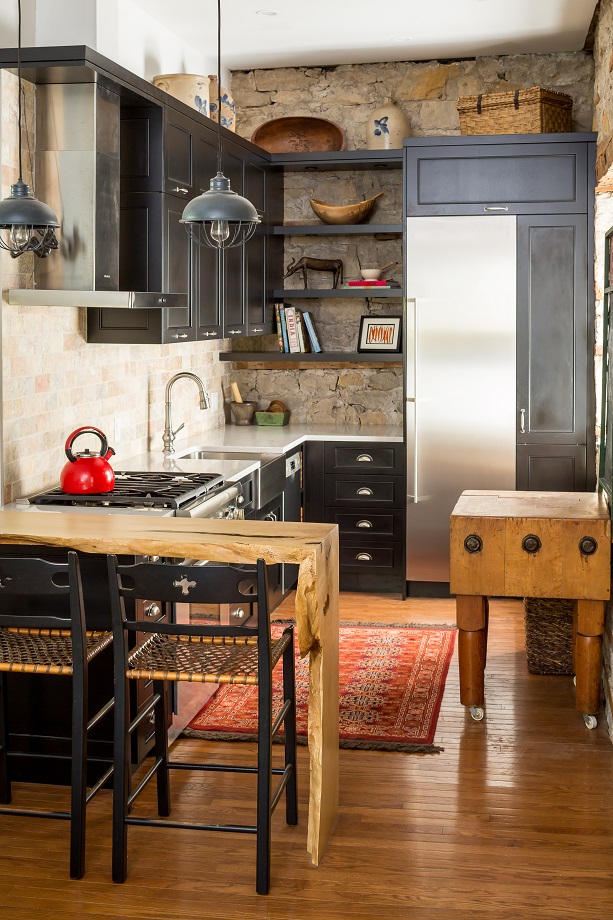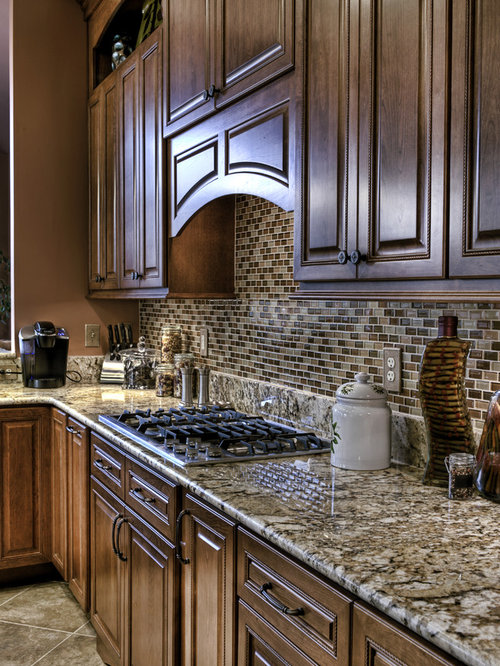A limestone kitchen sink can be a stunning addition to any kitchen, offering a unique blend of natural beauty and durability. This type of sink brings a sense of sophistication and warmth that is difficult to achieve with more traditional materials like stainless steel or porcelain. The first thing that stands out about a limestone sink is its distinctive appearance. Each limestone slab is different, showcasing its unique pattern of veins, textures, and color variations. This means that every limestone sink is one of a kind, giving your kitchen a personalized touch. The earthy tones of limestone – ranging from soft beiges to deeper greys – also provide a versatile base that can blend well with a variety of kitchen designs, whether you’re aiming for a rustic, contemporary, or classic aesthetic.
Limestone is a natural stone that is formed over millions of years through the accumulation of calcium carbonate in marine environments. Its composition gives it a smooth, tactile surface that feels luxurious to the touch. When sealed properly, it becomes highly resistant to water, stains, and other common kitchen challenges. This makes it a durable option for a sink, as it can withstand daily use without losing its appeal. However, it’s important to remember that limestone is a softer stone compared to granite or quartz. While it can hold up well, it does require more care and attention to maintain its pristine appearance over time.

One of the key benefits of a limestone kitchen sink is its ability to act as a focal point. The natural texture and hue of limestone can draw the eye, making it a statement piece in the kitchen. Whether you choose a farmhouse-style sink or a more modern, sleek design, the visual impact of limestone cannot be overstated. Many homeowners love the way a limestone sink can tie together the other elements in the kitchen, such as the countertops, cabinetry, and flooring. For those looking to create a cohesive, nature-inspired look in their kitchen, limestone is a fantastic option.
Installing a limestone sink can also contribute to a more eco-friendly kitchen. Limestone is a natural material that is abundant and requires minimal processing compared to synthetic materials. Additionally, because it’s so durable, a limestone sink is a long-term investment. It will last for many years with the proper care, which reduces the need for replacements and minimizes environmental waste. For those conscious about sustainability, this can be a big selling point.

However, it’s crucial to be aware of the maintenance that a limestone sink requires. Limestone is a porous stone, which means it can absorb liquids if not properly sealed. Spills from acidic substances like lemon juice, vinegar, or tomato sauce can cause etching or staining if they aren’t cleaned up quickly. Regular cleaning and sealing are necessary to protect the surface of the sink from damage. Typically, limestone sinks need to be sealed at least once a year, but depending on how heavily the sink is used, it may require more frequent sealing.
Cleaning a limestone sink is fairly simple, but there are some specific guidelines to follow. Avoid using harsh, abrasive cleaners that can scratch or dull the surface of the stone. Instead, opt for pH-neutral cleaners that are specifically formulated for natural stone. A soft cloth or sponge is ideal for wiping down the sink, and it’s important to dry the sink after each use to prevent water spots from forming. This daily routine will help maintain the sink’s appearance and functionality for many years to come.

In terms of design, limestone sinks offer a wide range of possibilities. You can choose from different sink shapes and sizes, depending on your kitchen’s layout and your personal preferences. A farmhouse-style limestone sink is a popular choice, as its deep basin is not only functional but also provides a bold, rustic look. Alternatively, undermount limestone sinks offer a more streamlined, modern appearance, seamlessly integrating with the surrounding countertop. The customization options extend to the finish as well, with some homeowners preferring a honed, matte finish for a more subtle look, while others opt for a polished finish to enhance the natural sheen of the stone.
Although limestone sinks can elevate the aesthetic of a kitchen, they do come with some considerations in terms of cost. Limestone is typically more expensive than stainless steel or porcelain sinks, both in terms of material and installation. Because limestone is a heavy material, proper support is necessary to ensure the sink is securely installed. This might involve additional structural work or reinforcement under the countertop, which can increase the overall cost. However, many homeowners feel that the investment is worth it, given the beauty and longevity of the sink.
Another consideration is that limestone sinks, while durable, can chip or scratch if heavy or sharp objects are dropped into the sink. This is especially true for the edges of the sink, which are more vulnerable to damage. To avoid this, it’s important to handle dishes and cookware with care, and consider using a sink grid or mat to provide an extra layer of protection for the sink’s surface.
Limestone sinks are also heat-resistant, which is an advantage in a busy kitchen. You won’t have to worry about placing hot pots and pans in the sink, as the stone can withstand high temperatures. However, sudden, extreme temperature changes – like pouring boiling water directly into a cold sink – could cause thermal shock and lead to cracking. To prevent this, it’s a good idea to gradually introduce hot water into the sink or let it warm up a bit before pouring boiling water.

One of the most appealing aspects of limestone is that it ages gracefully. Over time, a limestone sink may develop a patina that adds character and depth to the stone. Many people appreciate this natural aging process, as it gives the sink a lived-in, timeless quality. However, if you prefer to keep the sink looking brand new, regular maintenance and resealing will help preserve its original appearance.
In terms of resale value, a limestone sink can be a valuable asset. Kitchens are often a focal point for potential homebuyers, and a high-end, natural stone sink can set your kitchen apart. It shows that you’ve invested in quality materials and design, which can increase the overall appeal and value of your home. Even if you’re not planning to sell your home anytime soon, the daily enjoyment and functionality of a limestone sink make it a worthwhile investment.
It’s also worth noting that limestone sinks are available in a variety of price points, depending on the specific type of limestone, the size of the sink, and the complexity of the design. While it’s true that limestone sinks can be more expensive than some other options, there are also more affordable limestone varieties available that still offer the beauty and durability of natural stone. Shopping around and comparing different suppliers can help you find a limestone sink that fits both your budget and your style preferences.
For those who love the idea of incorporating natural elements into their home, a limestone sink offers a connection to the earth that few other materials can provide. Its rich history, formed from ancient marine deposits, adds a sense of timelessness and authenticity to your kitchen space. Whether you’re renovating your kitchen or building a new home, a limestone kitchen sink can serve as a focal point that elevates the entire design.

Common Mistakes to Avoid
One common mistake when choosing a limestone sink is neglecting to factor in the maintenance required to keep the stone looking its best. Some homeowners fall in love with the aesthetic of limestone but overlook the fact that it requires regular sealing and careful cleaning to prevent stains and damage.
Another mistake is using harsh cleaners, which can damage the surface of the limestone. Acidic or abrasive products can cause etching and dullness over time, so it’s essential to stick to stone-safe cleaners. Additionally, improper installation can lead to problems. Because limestone is a heavy material, it’s important to ensure the sink is properly supported to avoid sagging or damage to the surrounding countertops.

Is a limestone kitchen sink durable enough for daily use?
Yes, limestone sinks are durable and can withstand daily use, but they require proper care. Although limestone is a softer stone compared to granite, with regular sealing and maintenance, it can last for many years. Being mindful of heavy or sharp objects can also prevent scratches or chips.
How do I maintain a limestone kitchen sink?
To maintain a limestone sink, it’s important to clean it regularly using a pH-neutral cleaner and a soft cloth or sponge. Avoid using harsh or abrasive cleaners, and wipe the sink dry after each use to prevent water spots. Sealing the sink annually is essential to protect it from stains and etching.
Can a limestone sink stain easily?
Limestone is a porous stone, which means it can absorb liquids and stain if not properly sealed. Spills from acidic substances like citrus, vinegar, or coffee can cause stains or etching. Regularly sealing the sink helps to create a barrier against stains, and cleaning up spills immediately can minimize damage.

What kind of design styles work well with a limestone sink?
Limestone sinks are versatile and can work well in various design styles, from rustic and traditional to modern and minimalist. The natural stone’s earthy tones and unique texture make it a great match for kitchens aiming for a warm, organic feel or a high-end, sophisticated look.
Is limestone a sustainable material for kitchen sinks?
Yes, limestone is considered a sustainable option because it is a natural material that requires less processing than synthetic alternatives. Its long lifespan also reduces the need for replacements, contributing to lower environmental impact. If sustainability is a priority, a limestone sink is a great choice.
How do I prevent damage to a limestone sink?
To prevent damage, avoid dropping heavy objects into the sink and use a protective sink grid or mat. Be cautious with acidic substances that could cause etching, and avoid exposing the sink to extreme temperature changes, which could cause cracking. Regular sealing and gentle cleaning are key to long-term care.
Related Posts: